As the plane descended over Lisbon, I saw the purple of the jacaranda trees. I had assumed that we missed the flowering season of the iconic trees, but the tail end still provided quite a show, on the trees and over the ground as petals fell
.
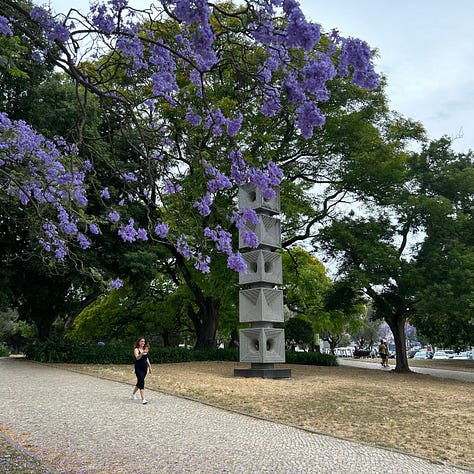
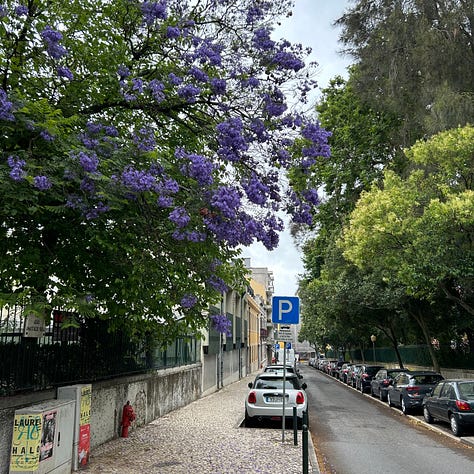
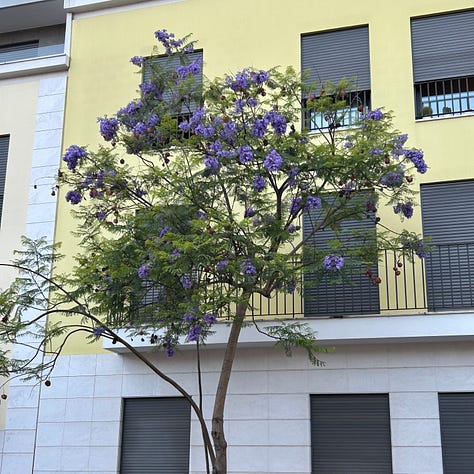
Jacaranda mimosifolia is native to South America, including Brazil, once a Portuguese colony. In the 19th century botanist Felix di Avelar Brotero obtained the seeds and grew them in the Ajuda Botanical Garden in Lisbon and offered seeds to anyone who wanted them. By the early 20th century the trees grew throughout the city. Buildings in Lisbon are often painted with vibrant colors or covered in colorful tiles providing a perfect combination with the purple blooms.
Another tree imported from South America, not as common as the jacaranda, is the Tipuana tipu, the Pride of Bolivia or rosewood. Clusters of deep yellow-orange flowers, delicate foliage, and a sweet fragrance are all on one tree.
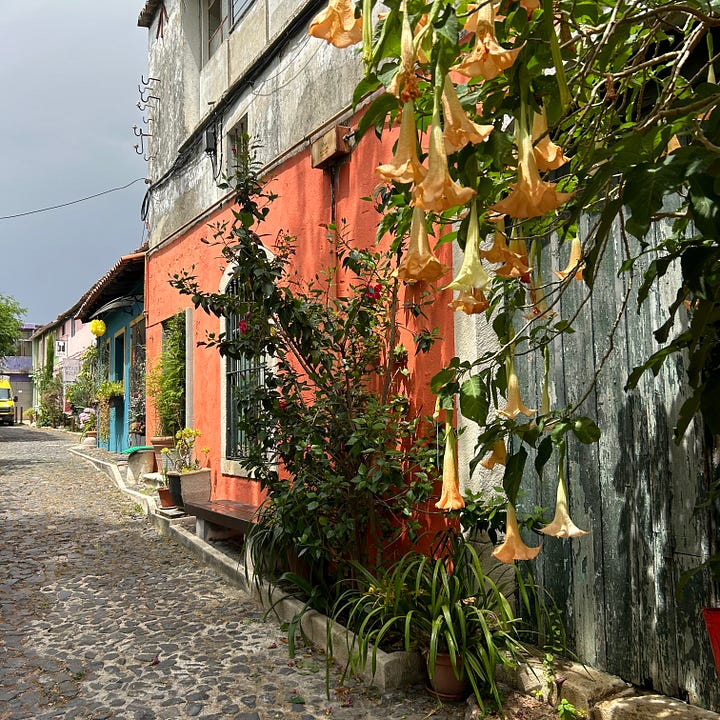
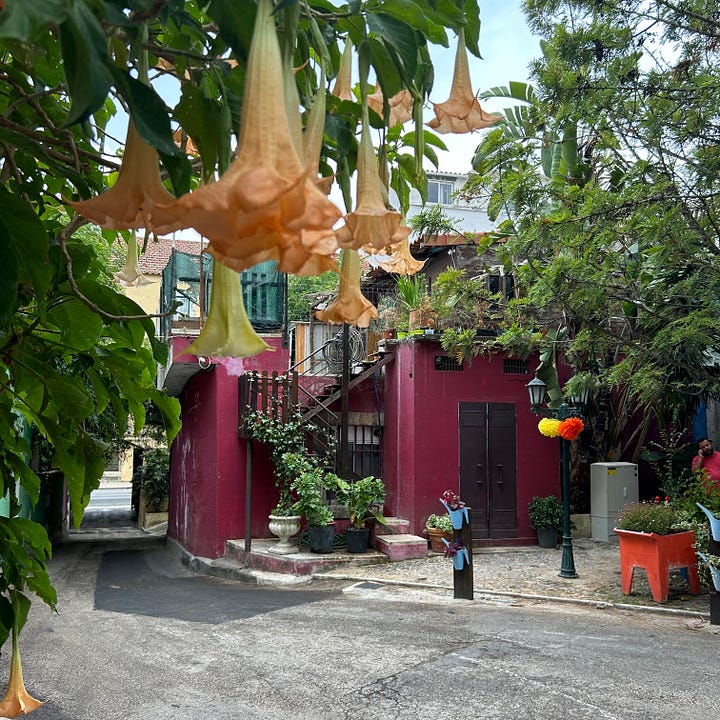
Sweetness exudes from the pendulous flared blooms of Brugmansia suaveoleus, also from South America. They are commonly known as angel’s trumpets and are extremely toxic. Perhaps the thought behind the sobriquet is that one bite would send you off to heaven. But here on earth the perfume is heavenly. The first we came upon was on a side street we had wandered down, the peach colored blooms were set against a salmon building on one side and a burgundy on the other. Delicious.
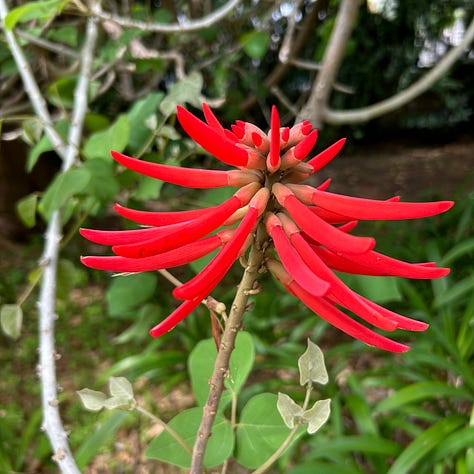
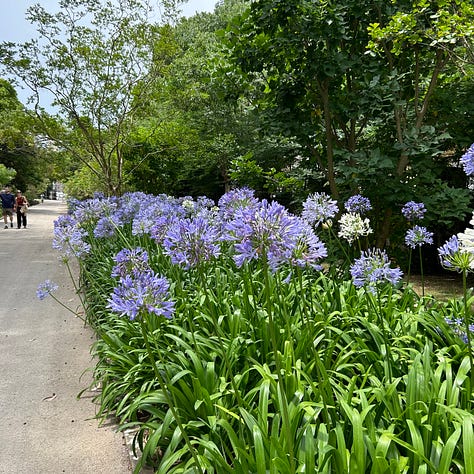

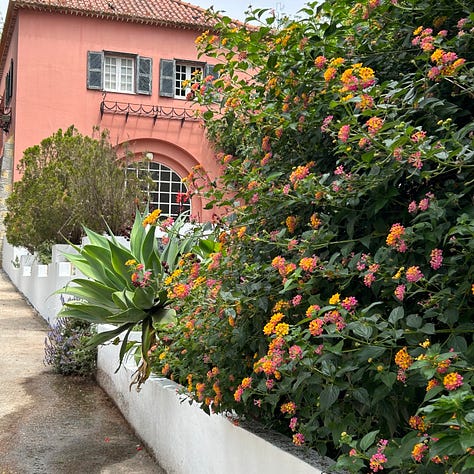
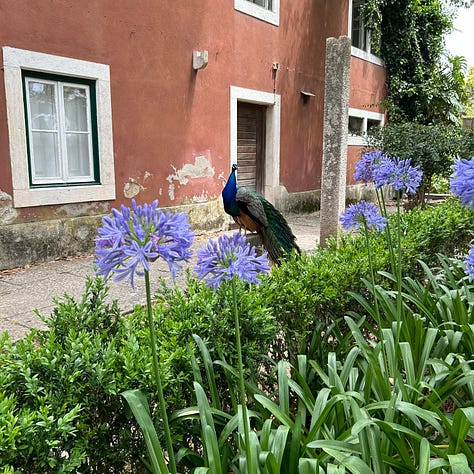
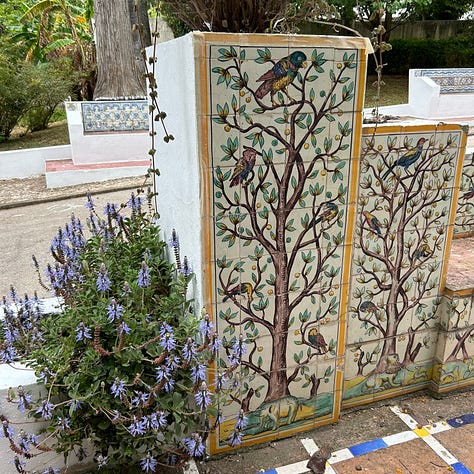
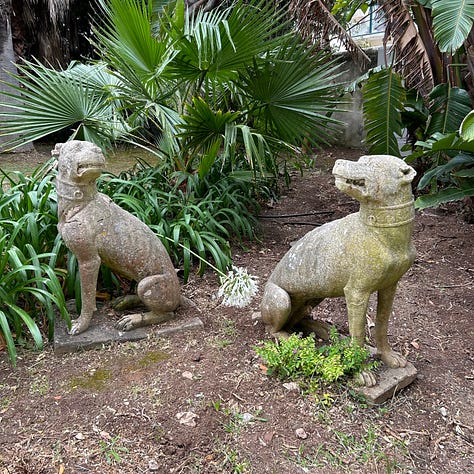
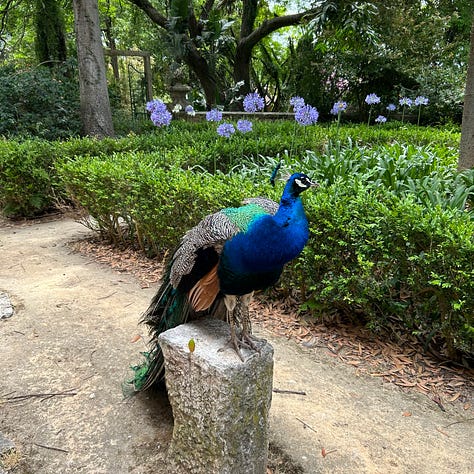
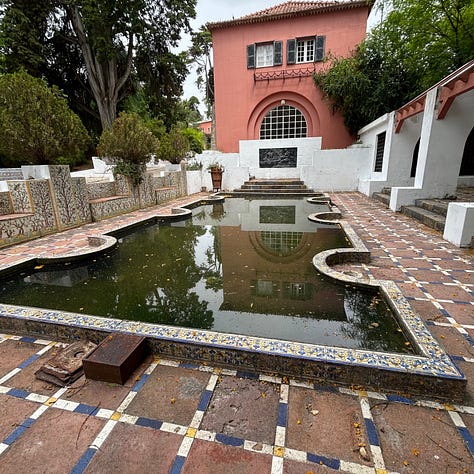
Near our lodgings in Belem is the Jardim Botanico Tropical, a paradise of brilliant plants, exquisite tile work, and families of roaming pea fowl. Here, and throughout the city, are massive beds of Agapanthus praecox, the South African native. It was wonderful to see them flourishing in the ground in such abundance.

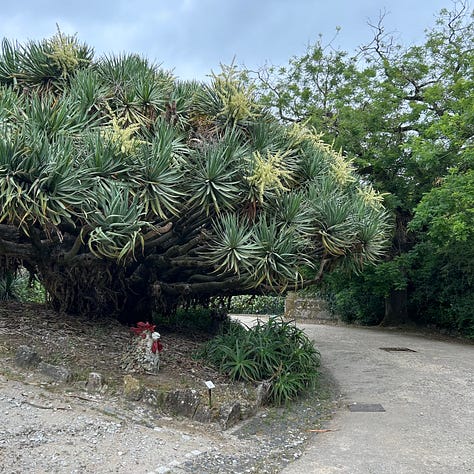
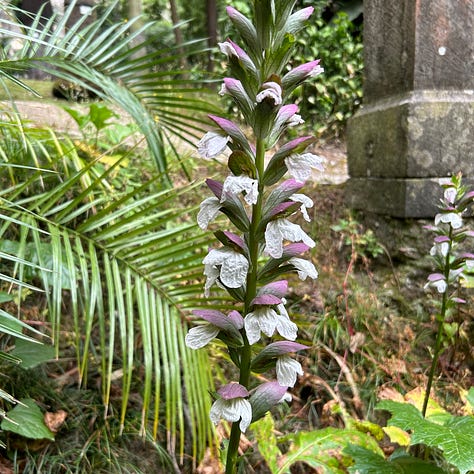
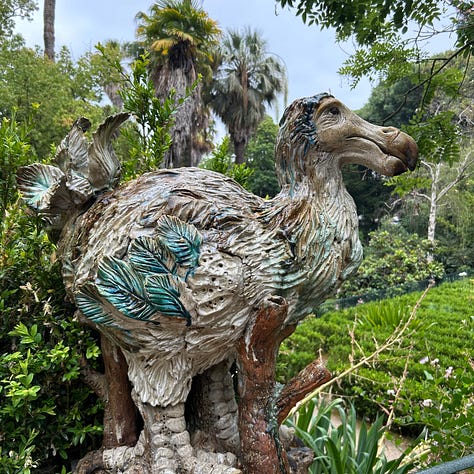
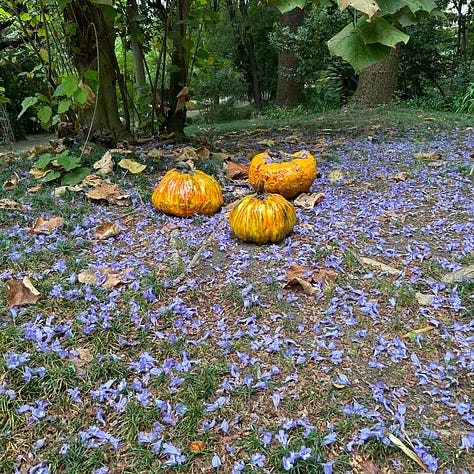

The next day we visited the University of Lisbon Botanical Garden, a quiet oasis of towering shady trees. I was admiring an acanthus flower and turned to face a sculpted dodo bird. Numerous artworks were placed among the plants. And no peacocks, but a sweet mama duck and ducklings lived in the undergrowth.
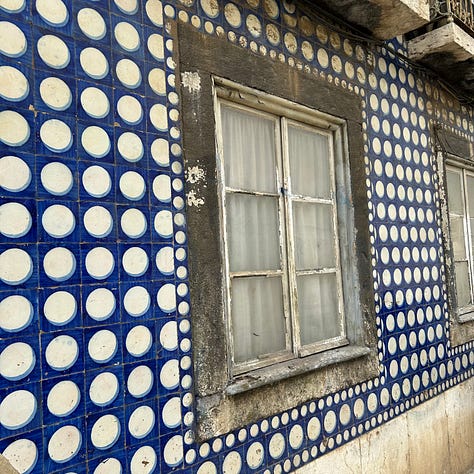
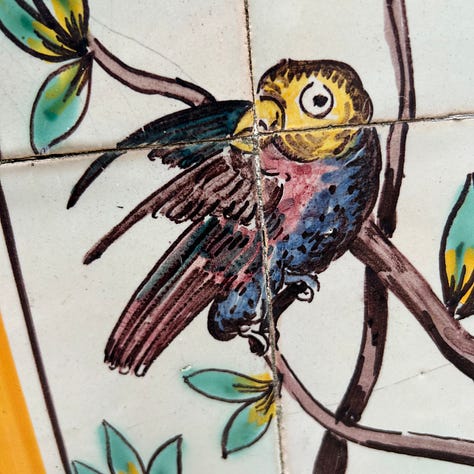
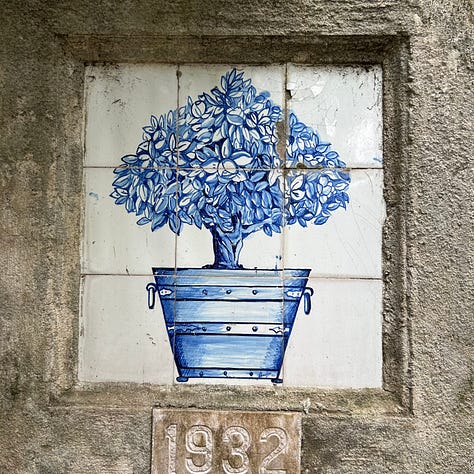
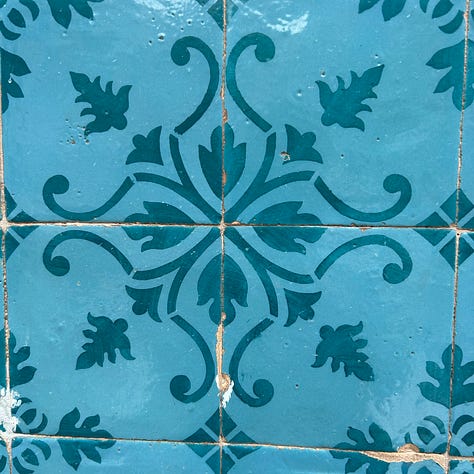
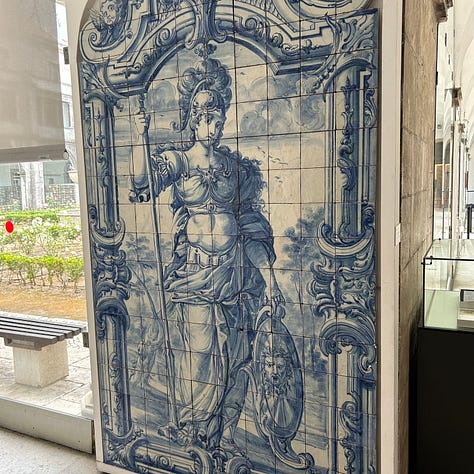
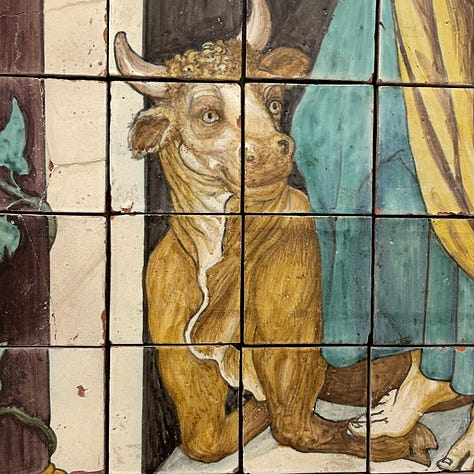


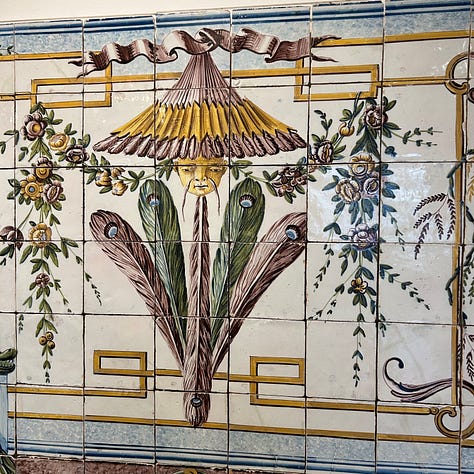
Azulejos, the decorative tiles that cover buildings, benches, and walls are a perfect backdrop for the flora of Lisbon. A trip to the National Tile Museum or observing along the streets is a feast for the eyes. The tradition that dates back to the Moorish influence and includes Italian and Spanish input, the geometric patterns and representative scenes add an additional element to the floral displays.

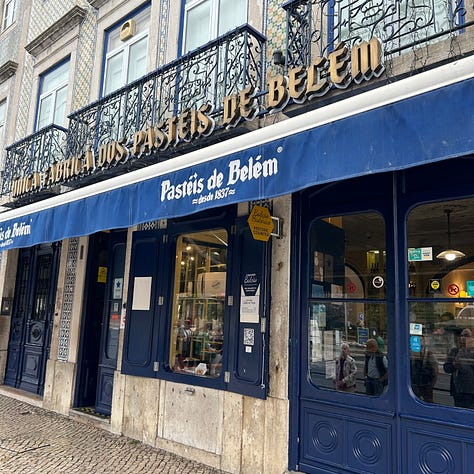
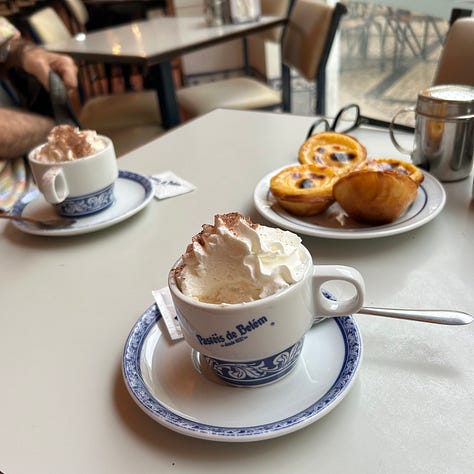
The famous delicacy, the pasteis de Belem, has been sold since 1834 in a shop near us. On our last morning we had a breakfast of two of the warm cream pastries and a cappuccino, strangely, but deliciously, served with whipped cream. It was a rich send off from this vibrant, colorful city. Obrigado Lisboa.

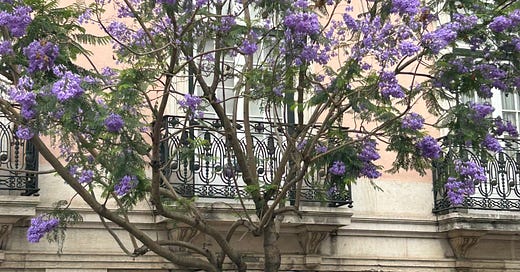



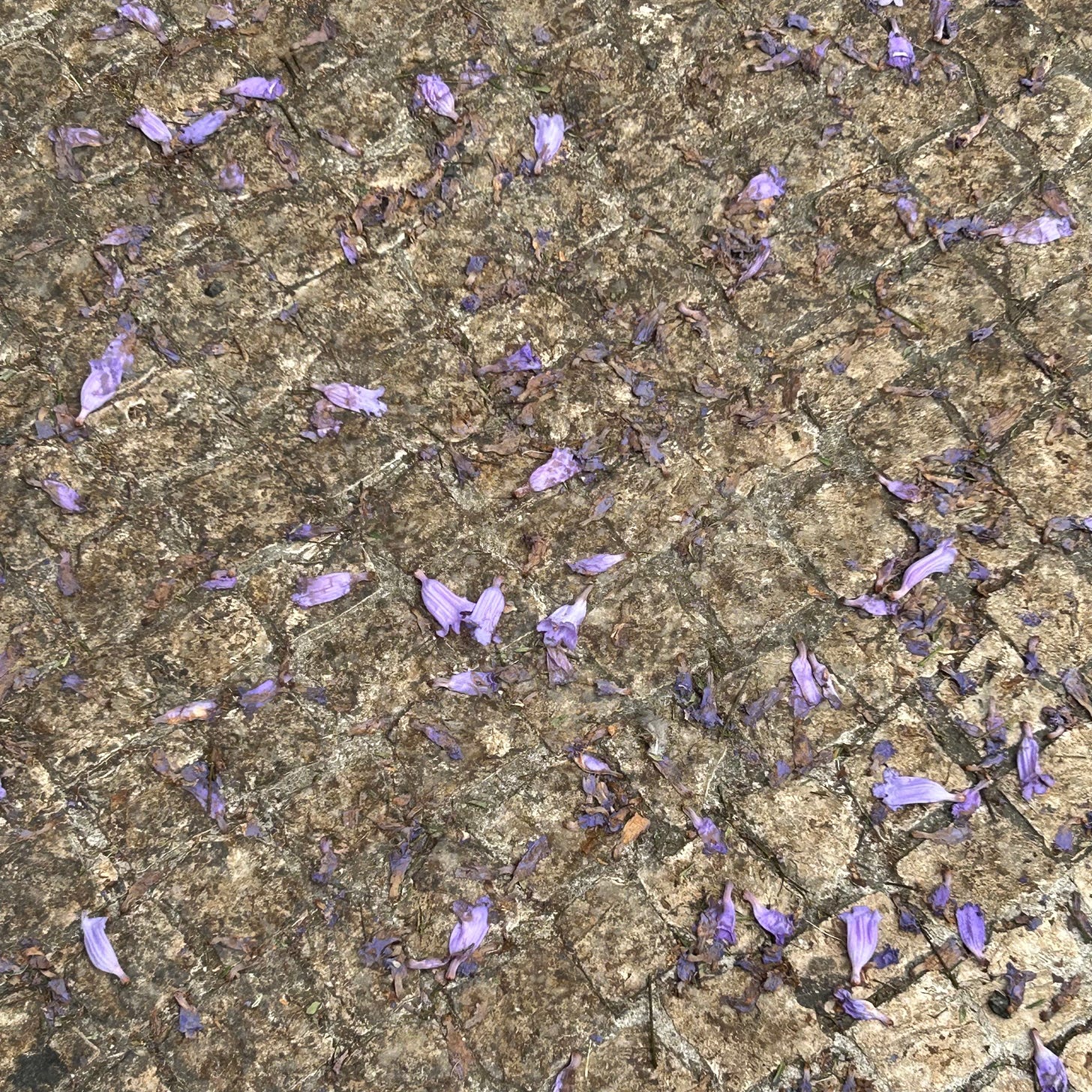
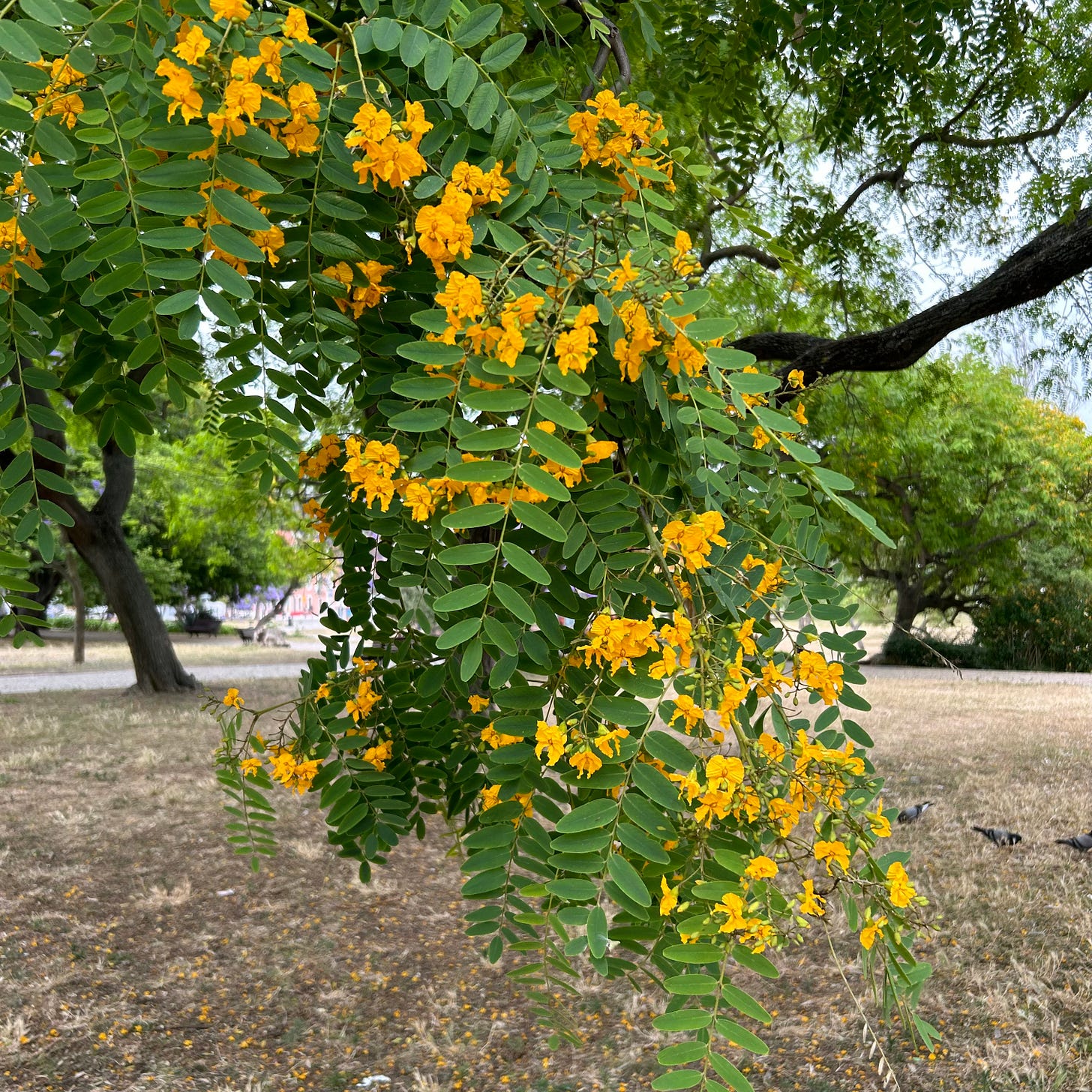
Love the Rose wood 🪵 story 🧡🌳💚~ I know the wood now I know some thing about the tree🌳🧡
Love all the plants and trees you mention!!